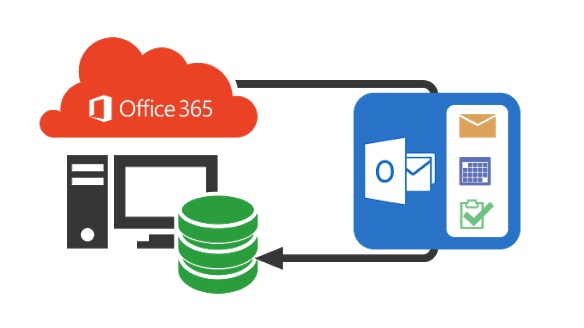Today’s business conditions in which enterprises exist are significantly different from those of 15 or even 10 years ago. The rapid development of technology has allowed most businesses, regardless of their type or size, to move from physical to digital workflow.
And the virtual data rooms became the very tool that made this transition possible. Currently, they have become the main solution that helps company members not only work with a bunch of various data but also communicate centrally within the certain platform they use.
One of the key conditions for the exchange of corporate information is the maximum level of security and confidentiality. This applies to important financial transactions during mergers and acquisitions, fundraising, IPOs, and more.

Dataroom software 100% copes with this task, as you will see after reading this article.
So keep reading to learn more.
Contents
Advantages of VDRs Over Physical Rooms
Virtual data rooms technologies provide businesses with the ability to quickly organize, store, edit, and share corporate information, which is practically much more difficult to do with physical rooms. In addition, maintaining virtual data rooms is much cheaper than physical ones.
With the use of VDR, such complex processes as mergers and acquisitions are carried out much more efficiently and cheaper. Thanks to remote access, you can conduct VDR due diligence, attract investments, work with corporate data from almost any point of the world.
Unlike VDRs, physical rooms have more limitations: they require a lot of time to organize meetings and cannot perform their function without the direct presence of the parties.
The Internal Structure of VDRs
First of all, it should be said that any data room is characterized by high flexibility. Of course, some providers implement this option in different ways, but for the most part, you can fully customize the data rooms for your specific needs.
This applies to all elements of the software, including the interface. However, when they talk about VDR flexibility, first of all, it means setting up the internal architecture of the service.
A VDR can be viewed as a single structure that consists of various folders with files. There, you may store graphic, text, or multimedia materials. Most up-to-date VDRs provide the ability to work with most formats and file extensions.
Let’s take a look at an example: an organization that provides investment and banking services can structure its data room for working with files and comprehensive analysis of materials in several areas at once:
- legal;
- IT;
- personnel;
- tax;
Data can only be accessed by team members who have the appropriate access level. Security settings are handled by the administration of the data room, which can add or remove a user, assign a status, block or vice versa open access to individual files in a folder, and so on.
When data is uploaded into VDR, information is not stored centrally on a local resource but is distributed to remote locations. In many ways, this diversification depends on the number of representative offices of the current provider around the world. This is an important nuance that characterizes electronic data room software. Therefore, when you choose a solution for your business, do not forget to pay attention to this nuance.
All company data is repeatedly copied and stored in different places. Therefore, a company using VDRs should not worry about data being destroyed due to physical impact (such as a natural disaster) or malicious acts from the outside (hacker attack).
Common Uses of Data Room Software
Given the above, it becomes clear why virtual data room technologies are used everywhere. However, let’s structure the main areas of application of the WDR.
Technologies
This is perhaps the most striking example since all the major technology organizations use VDRs. Thanks to this tool, they can freely communicate and exchange information safely while being thousands of kilometers away from each other.
Corporate Development
It is no secret that along with the increase in the amount of data, companies are looking for new solutions that would allow organizing and structuring data as simply and safely as possible. It has a direct impact on the strategy of the company’s development and data rooms perfectly cope with this task.
Startups
In this case, VDRs are used at the stage of attracting investors. With their help, it is easier for the team to present their product in the best light, to reveal the details of its functionality. In addition, VDRs help keep track of investors who studied materials, how much time they spent on the platform, which folders they opened, and so on. This helps polish the product development strategy.
Investment Banking
After technology companies, investment bankers are the second largest group using virtual data rooms. All their activities directly depend on the speed and security exchanging of large data volumes. This applies to capital raising, mergers and acquisitions, data room due diligence, Initial Public Offering, and more.
Private Equity and Venture Capital
A key feature of these organizations is the simultaneous analysis of several transactions at once. In this case, VDRs provide continuous input of new data for further analysis.
Jurisprudence
For many people, this area is associated with a bunch of paper documents, so it is not surprising that many legal firms quickly moved to the side of digitalization at the first opportunity. Now, instead of massive file cabinets, data room services are being used to simplify the exchange of documents for any type of litigation.
Scientific Research Area
In this area, the life science industry is the most frequent user of VDR technologies. Their activity directly depends on the safety of the intellectual property. VDR rooms can provide an adequate level of security and prevent the leakage of data on clinical trial results, personal information about patients, and more.






![DNS_Probe_Finished_No_Internet Error [RESOLVED] Fix DNS_Probe_Finished_No_Internet Error](https://howandwow.info/wp-content/uploads/2019/09/Fix-DNS_Probe_Finished_No_Internet-Error.jpg)
![Err_Connection_Reset Error in Chrome [RESOLVED] Fix Err_Connection_Reset Error in Google Chrome](https://howandwow.info/wp-content/uploads/2019/09/Fix-Err_Connection_Reset-Error-in-Google-Chrome.jpg)
![Err_Cache_Miss in Google Chrome Error [RESOLVED] Err_Cache_Miss in Google Chrome Error](https://howandwow.info/wp-content/uploads/2019/08/How-to-Fix-Confirm-Form-Resubmission-Error.jpg)






![Steam Missing File Privileges Error [RESOLVED] How to Fix Steam Missing File Privileges](https://howandwow.info/wp-content/uploads/2020/07/How-to-Fix-Steam-Missing-File-Privileges-Error-100x70.jpg)




![SIM Not Provisioned MM#2 Error [RESOLVED] SIM Not Provisioned MM#2](https://howandwow.info/wp-content/uploads/2020/03/SIM-Not-Provisioned-MM2.jpg)







